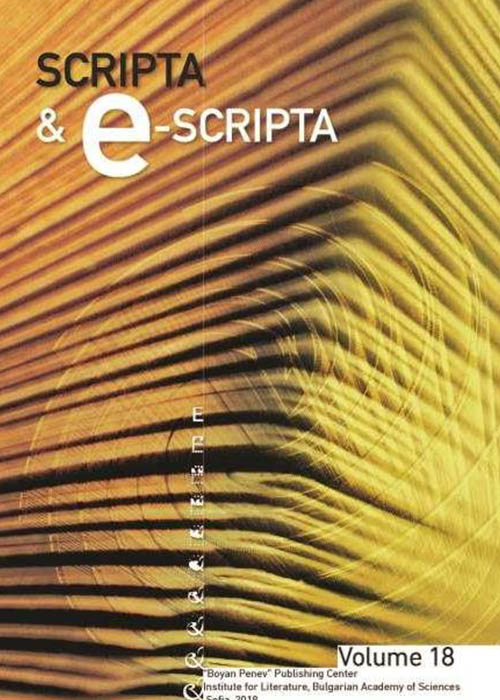Le premier penitential vieux slave “Zapovedi svetih otec” en tant que modele du texte
The first old-slavic penitential “Zapovedi svetih otec” as text model

- Author(s): Mariyana Tsibranska-Kostova
- Subject(s): Literary Texts // Old-slavic penitentia // Glagolitic Sinai Euhologion // Ustiujka Kormchaia //
-
Published by: Institute for Literature BAS

- Print ISSN: 1312-238X
- Summary/Abstract:
The article studies the repeatedly published text of the Penitential of the Glagolitic Sinai Euhologion, X-XI century, in comparison with the archaic Cyrillic copy of the same text of Ustiujka Kormchaia, XIII-XIV century and with other later Cyrillic copies. The stability of the text model is studies, as well as the linguistic changes it is subject to. The authoress defends the view that the Glagolhic and the Cyrillic copies advance to one and the same unremaining archetype – this of the first and only Slavonic translation of the model of Poenitentiale Merseburgense, type ? or of a source very close to it. The latter, dating from the end of the VIII or the beginning of the IX century, is representative of the practice of the Franks Empire and Church and most likely it was respected and influential in its Latin aspect in the close west-Slavic lands oven before being translated into Slavonic. It is impossible to determine the authorship of the translation. Nevertheless, a number of considerations of historical-cultural and linguistic nature make the authoress support the most distributed thesis about the Moravian-Panonic origin of the translation. In that sense the text undoubtedly should be added to the church-juridical heritage, created during the Cyril-Metodii’s mission. The influence of the canonic apparatus of the Orders is also searched – especially of the formula “bread and water” on another early juridical monument, such as Law to judge people.
Journal: Scripta & e-Scripta vol 2, 2004
-
Page Range: 243-258
No. of Pages: 16
Language: French - LINK CEEOL: https://www.ceeol.com/search/article-detail?id=191681
-
Mariyana Tsibranska-KostovaProf., DSc. Institute for Bulgarian Language, Bulgarian Academy of Sciences, Sofia, Bulgaria
-
SUBJECT: Literary Texts // Old-slavic penitentia // Glagolitic Sinai Euhologion // Ustiujka Kormchaia //KEYWORDS:
-